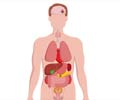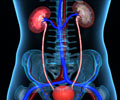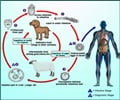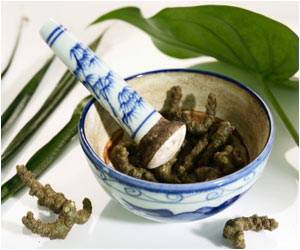Using a compound from a centuries-old Chinese traditional medicine, researcher has been able to prevent the formation of kidney-destroying cysts in polycystic kidney disease.
Using a compound from a centuries-old Chinese traditional medicine, Yale University researcher Dr. Craig Crews has been able to prevent the formation of kidney-destroying cysts in a mouse model of polycystic kidney disease. This ability holds out hope for what would be the first treatment, other than kidney transplant or frequent dialysis, for one of the most lethal of all kidney diseases worldwide.
Triptolide is derived from a Chinese medicinal herb, named Lei Gong Teng, which has been used in traditional medicine to treat cancer, inflammation, and auto-immune diseases and, more recently, also has been tested in Phase I clinical trials as an anti-tumor agent.This study, with mice bred to have a disease like human polycystic kidney disease, used triptolide with a less toxic concentration than that used in cancer chemotherapy trials. At that level, the compound marked reduced cyst formation in the mice compared to genetically similar mice not taking the compound.
During normal kidney development, cells lining the kidney tubules continue growing and dividing until they receive a signal that the tubule is fully formed. The switch that turns on that signal consists of the growth regulatory proteins PKD1 and PKD2, located on hair-like cilia in the lining of the developing tubules. When urine begins flowing through the tubules, the flow bends the cilia that sets off the signal that no more growth is needed.
In people who have a mutation in one of these growth regulatory proteins, however, the message to stop growing never gets delivered, even when urine is flowing and the cilia are bending. It is as if the phone is ringing but the cell can't hear it. So, never sensing a signal to stop, the cells lining the fully-formed kidney tubules keep right on subdividing and growing. The result of this hyperproliferative, unregulated growth: uncontrolled growth of cells lining the tubules and the formation of large cysts in the kidneys.
The vast majority - 85 percent - of patients with polycystic kidney disease have a gene causing PKD1 to be missing or to function poorly. Because most patients inherit only one abnormal gene and one functional gene, the body is usually able to compensate for the faulty gene and the person retains kidney function during the 20s and 30s. But through random mutagenesis, the remaining good copy of PKD1 is lost in some cells, which then switch to the hyperproliferative state. As the person's kidney begins to develop these cysts, the kidney begins to swell, and the person moves to either dialysis or transplant in order to survive.
That means a treatment that slows down the development of cysts does not have to stop their production completely to be effective, says Dr. Crews.
Advertisement
Source-Eurekalert
SRM/V











